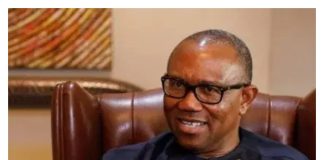As it battles inflation that remains at four-decade highs, the Federal Reserve is expected to hike its key interest rate another 0.75% Wednesday.
The Federal Open Market Committee met Tuesday to set the latest rate increase; it is expected to be announced Wednesday afternoon. This interest rate, known as the federal funds rate, affects the cost of borrowing and the pace of investment throughout the economy. Since March, the Fed’s rate-hiking has helped make borrowing and investing more expensive, the purpose of which is intended to slow the economy and moderate price increases.
The rate hikes this year have unfolded against the backdrop of a consumer price index that has remained elevated. In September, it clocked in at 8.2% on an annual basis. Food and energy price increases were higher. Even stripped of those two items, whose price swings tend to be more volatile, the index saw its largest increase since 1982.
The rate hike would be the sixth consecutive one this year for the Fed, a cycle not seen since the inflation-fighting days of the early 1980s. The central bank has been bedeviled by stubbornly high inflation readings even as other factors that had been influencing price increases, like higher gas and energy prices, have cooled off.
As a result, some experts believe the Fed must keep raising interest rates, even if it drives unemployment higher. The Fed’s dual mandate dictates it must balance inflation and employment. Writing in The Washington Post this week, former U.S. Treasury Secretary Larry Summers called on Fed Chair Jerome Powell to maintain an aggressive stance on rate hikes, even if it causes job losses in the short term.
Summers predicted unemployment would have to rise above 4.4% to get inflation under control. The U.S. unemployment rate currently stands at 3.5%.
“For more than a decade, from 1966 to 1979, policymakers failed to do what was necessary to contain inflation because they shrank from the immediate consequences of restrictive policy,” Summers wrote. “History remembers them poorly.”
But debate has been ongoing concerning whether the Fed’s posture is now too aggressive, given other signs of weakening in the economy. That includes the fastest deceleration in home price growth on record as mortgage rates soar to more than 7% — the highest in 20 years.
Other interest rates, like those for auto loans and credit cards, are at highs not seen in more than a decade, meaning higher car payments and higher interest fees if you’re carrying a balance on your credit card. Another measure of inflation, personal consumption expenditures, has slowed over the past three months, when excluding volatile food and energy prices.
“We doubt Chair Powell’s tone will change significantly this week, but he won’t be able to hold back the tide if the numbers turn,” Pantheon Macroeconomics chief economist Ian Shepherdson wrote in a note to clients Monday.
He said market observers will be keenly focused on Friday’s payrolls report, which will show whether average hourly earnings are still growing. Wages have been increasing alongside inflation, though not enough to keep up with the price increases. The average hourly wage in the U.S. is now $32.46 as of September, up from $28.09 in September 2019. While workers may be enjoying higher salaries, the extra money gets eaten up by higher prices paid for goods and services.
“The Fed will not pause — never mind consider easing — as long as wage growth remains much faster than is consistent with the inflation target,” Shepherdson wrote.
Other economic experts say inflation is steering the ship.
“Despite a rapidly cooling housing market, inflation has shown no signs of letting up, the labor market is still strong, and the economy is resilient,” Greg McBride, chief financial analyst with Bankrate, said in a statement. “This forces the Fed to continue its aggressive approach on interest rates.”
Share your story or advertise with us: Whatsapp: +2347068606071 Email: info@newspotng.com

















